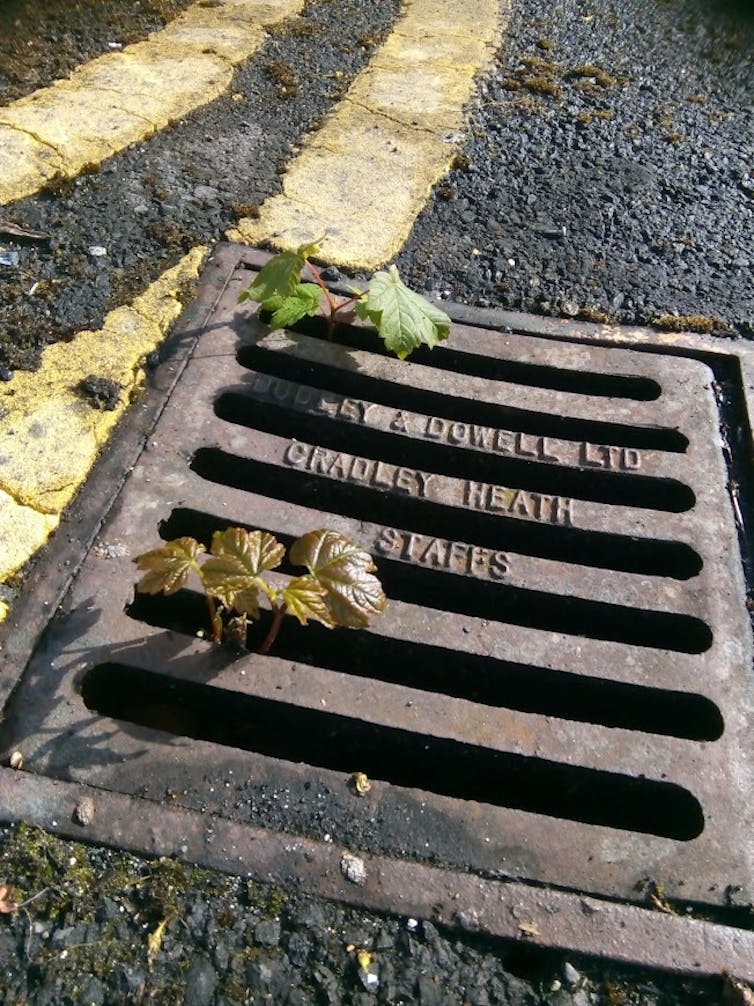Perhaps, like me, you’ve seen wildfires raging and glaciers melting on the news and felt helpless. In the face of reports that the impacts of climate change are worse than expected, what on Earth can you do?
While you may not be able to fix the big problems alone, there are ways to take action, and this can start with something as simple as a walk.
Walking mindfully – taking time to observe your surroundings and the thoughts and feelings they evoke – can help you see familiar spaces like your own street anew. This can make you more aware and appreciative of them, perhaps igniting a desire to protect them in turn.
I first became aware of the power of walking as a way of engaging with climate change when writing my novel, The Half-life of Snails. Setting time aside to explore the landscapes around Wylfa in North Wales and Chernobyl in Ukraine – both marked by the presence of nuclear power stations – I discovered how these places can awaken extreme emotional responses to this way of generating energy.
Walking with the purpose of paying close attention to how different features and areas make us feel and behave is at the heart of psychogeography: the academic intersection of psychology and geography. Practising this involves setting aside the usual reasons for going out, such as commuting, and pursuing a “dérive” instead – a drift through varied areas to defamiliarise.
In a recent episode of Your Brain on Climate, podcast host David Powell and I discussed how being emotionally connected to our part of the Earth motivates us to protect the wider environment. Research has shown that slowing down and looking closely at the spaces you use most often is integral to this process.
So, here are five short walks you can take to reengage with your local area:
• When walking to school or work, find a new route that avoids the usual places you pass. What new textures, smells, sounds and feelings do you encounter? How is it different from your familiar route?
• Walk your usual route towards the shops or work, but instead of focusing on getting there quickly, slow your pace and stop every three minutes or so to observe what surrounds you. What things do you notice which you usually miss on your daily commute? Are there flowers to smell or the sound of the breeze in the leaves? What emotions do these things stir?
• Walk in ever wider circles from your front door. Observe where people have made a negative impact, such as litter or chewing gum marks on the pavement. On the way back, look for wildlife thriving in unusual places, such as flowers in the cracks between paving stones and trees or shrubs growing out of bricks or guttering. Take time to consider how these observations make you feel, and why. What could you do to improve the area for the benefit of wildlife?
 Where is nature thriving despite the odds? Philippa Holloway, Author provided
Where is nature thriving despite the odds? Philippa Holloway, Author provided
• On a warm day, do what I call a “temperature walk”: seek out different surfaces along the route such as walls, grassy areas, and kerbstones, and rest your hands on them. What colours and materials attract and hold heat? The hottest might be contributing to global warming in a process known as the urban heat island effect. Consider how painting walls white, or campaigning for local changes, could help reduce this.
• Walk your street and, if possible, look at the different front gardens (a quick look as you are passing is fine). Do the gardens have grass and shrubs? Are they paved and covered with gravel or artificial turf? Is there a pattern between the design of the gardens and the number and type of birds and insects present? How might you use these observations to encourage nature in your own garden, or a local green space? Note down ideas along the way.
These five walks are just the start: psychogeography encourages us to be flexible, adaptive and imaginative, so come up with your own walks and get others to join.
Studies have shown that small actions, like sowing wildflowers, can not only contribute to slowing climate change and protecting biodiversity, but can also influence others to take responsibility too.
Walking with others and discussing steps, small or large, your community could take may end up being the start of more organised action. For example, you may begin a garden rewilding trend in your neighbourhood that sees people swap fences for hedges, or inspire a campaign for local councils to whitewash public buildings to deflect heat.
Who knows how far this could spread? But the first step is to take that walk…